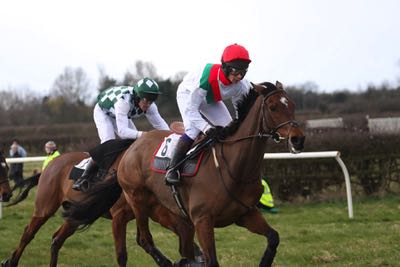
Thowra_uk / Flickr.com
Fans of horse racing in the UK and Ireland will likely have little trouble explaining the ins and outs of flat racing and the National Hunt game. It is, after all, those professionally run branches of the sport that effectively define racing on these shores – dominating in terms of attendances, TV coverage, column inches, and of course, betting turnover.
Dominant they may be, but flat and National Hunt racing aren’t the only shows in town when it comes to the equine entertainment on offer. In common with other sports, there is plenty going on when we scratch beneath the surface of the professional levels. And, in horse racing what we find when we look beyond the mainstream, is a version of the sport known as point-to-point racing. But, what exactly is this lesser-spotted racing variant?
Point-to-Point: Amateur National Hunt Racing
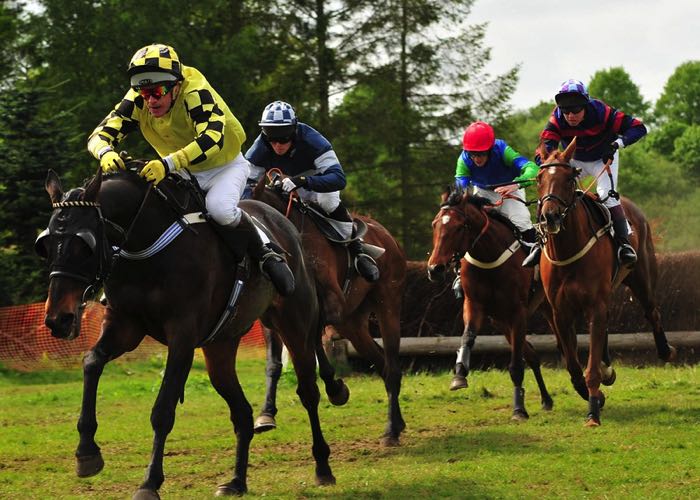
Paul Drummond / Flickr.com
Also known as “pointing” or “racing between the flags” – due to the fact that many of the courses use flags to assign the route, rather than white railings – point-to-point is effectively the amateur version of National Hunt, or jumps, racing. All jockeys taking part must be amateurs – although all must be at least 16 years old and in possession of a Riders Qualification Certificate – whilst, at least in Britain, any horse currently based at a professional training operation will be ineligible to compete.
Point-to-Point Owners & Riders Association
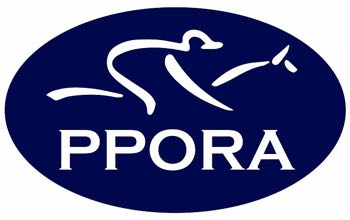 Whilst being overseen by the Jockey Club, the sport is effectively its own entity, lying under the jurisdiction of the Point-to-Point Owners and Riders Association and the Point-to-Point Secretary’s Association in Britain. Over in Ireland, the events are held under the “Regulations for Point-to-Point Steeplechases” as determined by the Irish National Hunt Steeplechase Committee. Horse Racing Ireland (HRI) takes responsibility for licencing events and distributing fees, but the individual meetings themselves are arranged on an amateur and voluntary basis.
Whilst being overseen by the Jockey Club, the sport is effectively its own entity, lying under the jurisdiction of the Point-to-Point Owners and Riders Association and the Point-to-Point Secretary’s Association in Britain. Over in Ireland, the events are held under the “Regulations for Point-to-Point Steeplechases” as determined by the Irish National Hunt Steeplechase Committee. Horse Racing Ireland (HRI) takes responsibility for licencing events and distributing fees, but the individual meetings themselves are arranged on an amateur and voluntary basis.
A Brief History of Point-to-Point
The roots of point-to-point racing are intertwined with those of the professional National Hunt game and hark all the way back to Ireland in the mid-18th century. It was in fact in County Cork in 1752 that the first-ever steeplechase reportedly took place, as the mounts of Cornelius O’Callaghan and Edmund Blake raced across the countryside from the steeple of Buttevant Church to that of Doneraile Church, negotiating obstacles including stone walls, hedges and streams along the way.
Growing Popularity in Ireland & Britain
It wasn’t long until this form of racing spread throughout Ireland and Britain, becoming particularly popular with huntsmen as a method of keeping their horses fit in between hunts. Of course, it wasn’t always the case that a pair of church steeples were conveniently located to mark out the course, and in the absence of such landmarks, competitors merely assigned one point in the land as being the starting point, and another as the finishing point. And, so point-to-point racing was born, with the first recorded use of the term coming in a publication known as Bell’s Life in January 1874.
Increased Structure
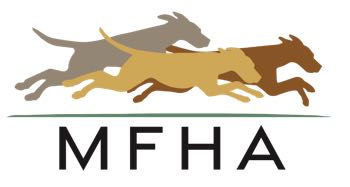 Initially developing on a local level, the late 19th century saw the sport begin to become more organised, subdividing into the professional National Hunt discipline and point-to-point which remained devoutly amateur. With this increased structure came a move away from the traditional cross-country events and towards contests held at tracks specifically laid out for the purpose.
Initially developing on a local level, the late 19th century saw the sport begin to become more organised, subdividing into the professional National Hunt discipline and point-to-point which remained devoutly amateur. With this increased structure came a move away from the traditional cross-country events and towards contests held at tracks specifically laid out for the purpose.
Then in 1913, the various local hunt race organisers came together to form the Master of Hounds Point-to-Point Association, creating a standardised set of rules and a more established structure to the season. Shifting to fall under the umbrella of the National Hunt Committee during the 1930s, point-to-point racing has been overseen by the Jockey Club since the late 1960s.
Point-to-Point Courses
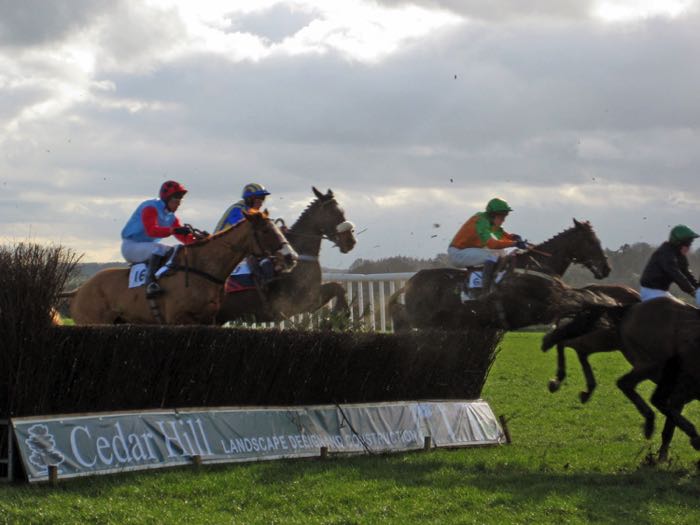
Extraordinary / Wikipedia.org
It may not enjoy quite the same profile as its professional cousin, but the point-to-point sphere nevertheless attracts significant interest, both in terms of participants and spectator attendance. And when it comes to the number of locations at which the action takes place, point-to-point actually comes out ahead, boasting 110 tracks in the UK, compared to a total of 59 professional racing venues. Whilst not officially licensed by the British Horseracing Authority (BHA) in the same manner as professional courses, each of these tracks has at least been approved as being fit for purpose by that organising body.
Spread over just about the length and breadth of the British and Irish mainland – with four tracks in Scotland and 21 in the southerly counties of Devon and Cornwall – these courses range from what effectively amount to “pop-up tracks” – laid out across open countryside or on farmers’ fields – to more conventional circuits. Examples include those on the inside of the main courses at Hexham and Bangor-on-Dee – with the defunct Towcester Racecourse also looking set to be revived as a National Hunt venue. Wherever you are in the country, chances are that you won’t be too far away from a point-to-point track, and for those curious about their nearest venue, the point-to-point Racing Company provides an easy-to-use course finder.
Which Horses Can Run in Point-to-Point Races?
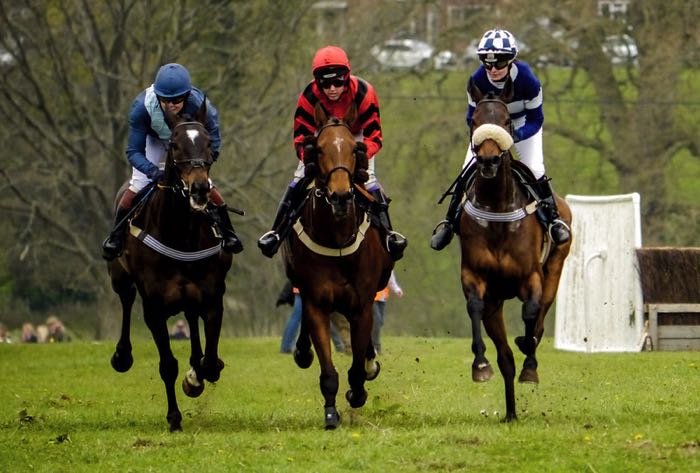
Morgan Masters / Flickr.com
Whilst not quite on the same scale as either flat or National Hunt, Point-to-Point racing does still boast a fairly deep pool of talent, with over 2,000 horses in training in the UK alone. Harking back to the early days of the sport, the entry criteria for a point-to-point event wasn’t especially high – with the sight of a local farmer rocking up on his favourite nag being far from unusual – but things have moved on in the modern era, with the vast majority of point-to-point events now being contested exclusively by thoroughbred animals.
However, simply being a thoroughbred isn’t enough to qualify a horse to run in a point-to-point. In a stipulation that clings onto the sport’s close association with hunting, runners must also be in possession of a certificate obtained from the Master of Foxhounds – confirming they have participated in a recognised hunt for at least four days during the hunting season. Obtaining this certificate entitles owners to enter their horses not only in point-to-point contests but also in Hunter Chase events contained within the National Hunt season proper. The above criteria broadly cover the types of animals permitted to take part in a point-to-point, however, the rules do vary a little on either side of the Irish Sea. Let’s take a look at each nation in turn.
British Point-to-Point Horses
In Britain, professionally licenced trainers may not enter horses in point-to-point contests, unless the runner in question is personally owned by the trainer. As such the majority of competitors tend to hail from livery yards – establishments that are not in possession of a professional licence but are nevertheless focused on the nurturing and training of thoroughbreds.
Often closely affiliated with a professional training operation, horses regularly move to a livery yard towards the tail-end of their racing careers – moving into the less competitive point-to-point sphere. With that in mind, British point-to-point contests do tend to feature older runners, perhaps past their peak – although there are of course exceptions.
Irish Point-to-Point Horses
Things are, however, a little different in Irish point-to-point racing. Unlike in the UK, professional Irish trainers are permitted to enter runners in point-to-point events. A difference that has a marked effect on the type of runners usually seen competing. Over in Ireland, these races are viewed as the ideal training ground for horses just setting out on their careers, and as such tend to attract fields of younger performers jam-packed with potential.
The likes of three-time Gold Cup winner, Best Mate, the mighty Denman, and Faugheen “The Machine” all began their racing careers in an Irish point-to-point field. And with that kind of roll of honour, it is no surprise that the contests are watched very closely indeed by many of the biggest owners in the game, willing to shell out significant sums of money should they believe they have identified a future star.
Types of Point-to-Point Races
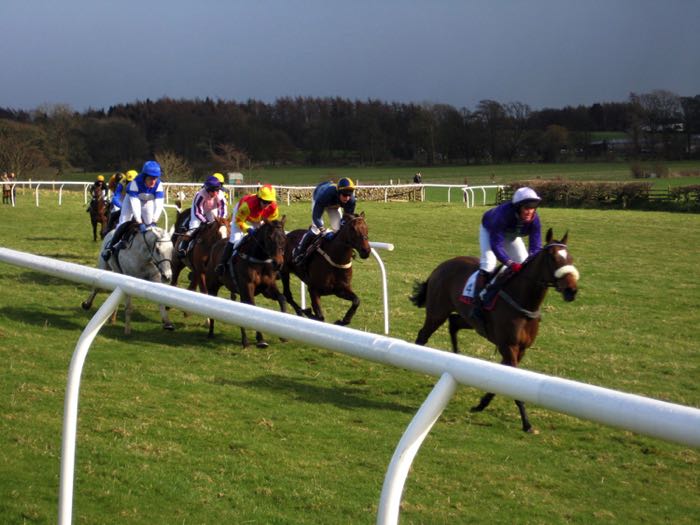
Extraordinary / Wikipedia.org
Point-to-point races usually take place over a minimum trip of three miles, with the main exception being maiden contests which can be held over the shorter distance of two and a half miles. At the vast majority of courses, a three-mile trip will represent approximately two circuits of the track, although there are exceptions, including the extensive two-and-a-half-mile circuit at Larkhill – one of the sport’s most prominent and well-respected courses.
Unless altered due to safety concerns, a point-to-point race must also feature no fewer than 18 fences, two of which should be open ditches. The fences themselves are similar to those used in conventional steeplechase racing, being around 4ft6in in height and mainly constructed from birch, providing a firm but fair test of those taking part.
The vast majority of point-to-point contests conform to that three-mile minimum trip, 18-fence criteria, but not all events are created equally. Just as in professional racing, the point-to-point structure contains a variety of race categories, designed to provide contests for runners across a range of abilities and experience. Exact categorizations can occasionally vary from meeting to meeting, but the following are by far the most widely used.
Maiden Race
In common with professional horse racing, point-to-point Maiden’s are open only to horses who have never previously won a race – be that a point-to-point event, or indeed a race of any description run under the rules of a recognised racing authority.
Intermediate Race
Open to all runners who have not won a previous Intermediate contest or any race on the flat, with the exception of National Hunt Flat races (Bumpers). Runners with a prior win in a maiden point-to-point contest are permitted to enter.
Open Race
As the name would suggest, these contests are open to all point-to-point runners and are usually the highest quality race on the card. Opens may be restricted to male jockeys only, female jockeys only, or mixed.
Hunters’ Chase
A weight-for-age steeplechase held under the Jockey Club’s rules of racing and usually contested at a professional racetrack. Restricted to horses and jockeys in possession of a Hunters’ Certificate.
Hunt Members Race
A restricted race, limited to runners registered with a local hunt, or specifically with the hunt promoting that particular point-to-point meeting.
Confined Race
A little more open than the Hunt Members Race, these events are open to all horses qualified either with the local hunt, the hunt promoting the meeting, or any of 15 geographically adjoining hunts.
In addition to the above categories, many meetings also include pony races on the flat. Restricted to jockeys between the ages of nine and 15, it is in this sphere that many modern professional riders first began to perfect their trade.
The Point-to-Point Season
The point-to-point season largely overlaps with the National Hunt campaign, traditionally beginning in late November and running through to mid-June. And, in common with National Hunt racing, the amateur arm of the sport has its seasonal highlights – one of which comes at the spiritual home of the National Hunt game, Cheltenham Racecourse.
Taking place in May each year, Cheltenham’s point-to-point evening is a culmination of numerous qualifying events held at tracks up and down the country and, much like the Cheltenham Festival in March, acts as a real celebration of the most talented runners and riders in the sport.
A Day at the Races
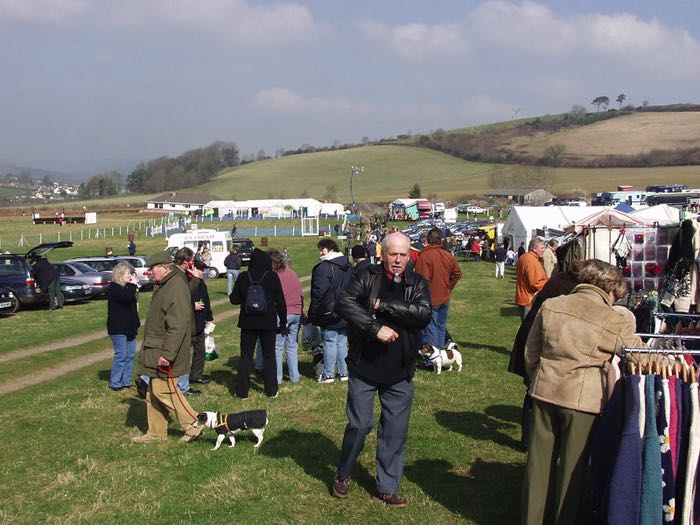
Ostaleri / Flickr.com
Whilst being overseen by the Jockey Club, and going under the jurisdiction of the Point-to-Point Owners and Riders Association, point-to-point meetings tend to be locally run affairs, with a regional hunt or recognised club often acting as organisers. And, in general, usually working on a voluntary basis, they do a fine job.
Traditional Race with a Rural Tone
In terms of the race day itself, an afternoon out at a point-to-point event bears many similarities with a traditional race day, albeit with a distinctly rural feel. Gates open around two hours before the first of between six and eight races, giving racegoers plenty of time to obtain a race card and take advantage of the facilities. Even the smallest meetings usually provide access to a bar, catering and toilets, whilst the larger events regularly feature trade stands or a country fair running alongside the racing action.
On Course Point to Point Betting
And, of course, if you are going to have a day out at the races, you may like to place a bet or two on the action. This is not essential, of course, but it does serve to add to the excitement. Point-to-Point events are only too happy to oblige the prospective punter, with traditional bookmakers and tote style betting available at the vast majority of courses – both usually being located in the vicinity of the paddock, where the horses are paraded before the race.
On course, is, in fact, the only way to bet on these events as, in most circumstances, online and high-street operators do not provide odds for point-to-point racing. Another thing to be aware of is that debit card facilities are a real rarity at this most rustic of racing days out, with cash very much being the currency of choice.
